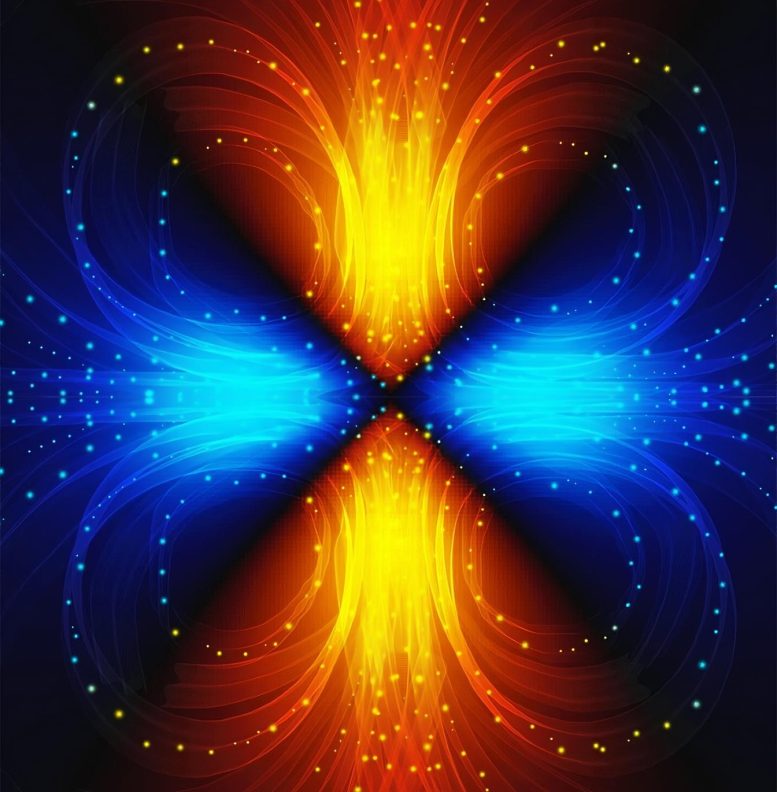
A team led by Boston College has devised a new quantum sensor method to image and comprehend the source of photocurrent flow in Weyl semimetals.
In a recent paper published in the journal Nature Physics, Brian Zhou, an Assistant Professor of Physics at Boston College, and his colleagues have uncovered a surprising new method for converting light into electricity in Weyl semimetals using quantum sensors.
Many contemporary technologies such as cameras, fiber optic systems, and solar panels rely on the transformation of light into electrical signals. However, in most materials, simply shining light on their surface does not result in the generation of electricity as there is no specific direction for the flow of electricity. To overcome these limitations and create new optoelectronic devices, researchers are studying the unique properties of electrons in Weyl semimetals.
“Most photoelectrical devices require two different materials to create an asymmetry in space,” said Zhou, who worked with eight BC colleagues and two researchers from the Nanyang Technological University in Singapore. “Here, we showed that the spatial asymmetry within a single material – in particular the asymmetry in its thermoelectric transport properties – can give rise to spontaneous photocurrents.”
The team studied the materials tungsten ditelluride and tantalum iridium tetratelluride, which both belong to the class of Weyl semimetals. Researchers have suspected that these materials would be good candidates for photocurrent generation because their crystal structure is inherently inversion asymmetric; that is to say, the crystal does not map onto itself by reversing directions about a point.
Quantum Sensors Reveal Photocurrent Flow Patterns
Zhou’s research group set out to understand why Weyl semimetals are efficient at converting light into electricity. Previous measurements could only determine the amount of electricity coming out of a device, like measuring how much water flows from a sink into a drainpipe. To better understand the origin of the photocurrents, Zhou’s team sought to visualize the flow of electricity within the device – similar to making a map of the swirling water currents in the sink.
“As part of the project, we developed a new technique using quantum magnetic field sensors called nitrogen-vacancy centers in diamond to image the local magnetic field produced by the photocurrents and reconstruct the full streamlines of the photocurrent flow,” graduate student Yu-Xuan Wang, lead author on the manuscript, said.
The team found the electrical current flowed in a four-fold vortex pattern around where the light shined on the material. The team further visualized how the circulating flow pattern is modified by the edges of the material and revealed that the precise angle of the edge determines whether the total photocurrent flowing out of the device is positive, negative, or zero.
Anisotropic Photothermoelectric Effect
“These never-before-seen flow images allowed us to explain that the photocurrent generation mechanism is surprisingly due to an anisotropic photothermoelectric effect – that is to say, differences in how heat is converted to current along the different in-plane directions of the Weyl semimetal,” Zhou said.
Surprisingly, the appearance of anisotropic thermopower is not necessarily related to the inversion asymmetry displayed by Weyl semimetals, and hence, may be present in other classes of materials.
“Our findings open a new direction for searching for other highly photoresponsive materials,” Zhou said. “It showcases the disruptive impact of quantum-enabled sensors on open questions in materials science.”
Zhou said future projects will use the unique photocurrent flow microscope to understand the origins of photocurrents in other exotic materials and to push the limits in detection sensitivity and spatial resolution.
Reference: “Visualization of bulk and edge photocurrent flow in anisotropic Weyl semimetals” by Yu-Xuan Wang, Xin-Yue Zhang, Chunhua Li, Xiaohan Yao, Ruihuan Duan, Thomas K. M. Graham, Zheng Liu, Fazel Tafti, David Broido, Ying Ran and Brian B. Zhou, 23 January 2023, Nature Physics.
DOI: 10.1038/s41567-022-01898-0
The study was funded by the National Science Foundation, the DOE/US Department of Energy, and the Air Force Office of Scientific Research.
Never miss a breakthrough: Join the SciTechDaily newsletter.